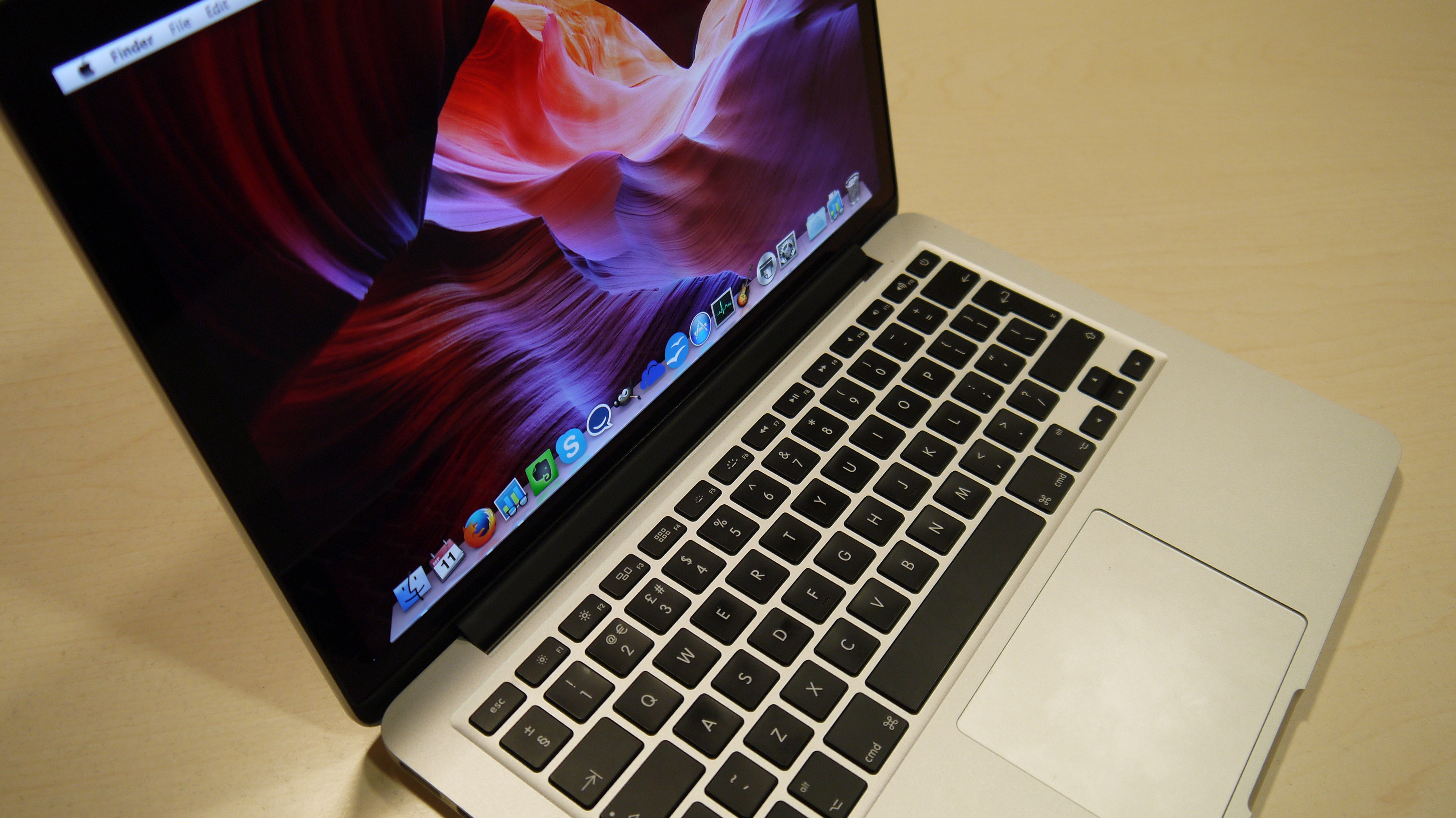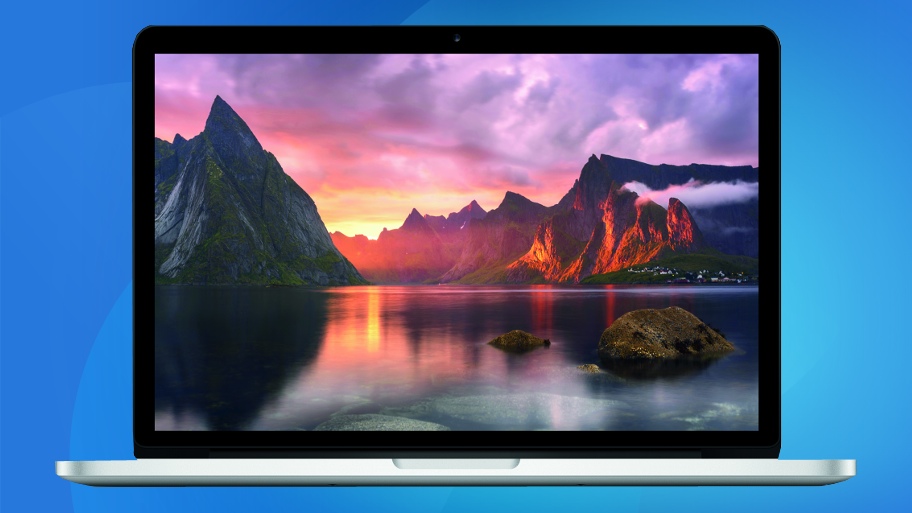Why you can trust TechRadar
That 200MHz faster clock processor speed helps make for a nippy machine when combined with its fast PCIe-based flash storage. It can boot from cold in just under 10 seconds, and once you're up and running, you're rarely waiting longer than a second or two for apps to load.
The extra processing power also helps when editing images in programs such as GIMP, or Photoshop Elements. On the 13-inch 2013 MacBook Air, for example, scaling or resizing high-resolution images can often take minutes as the processor crunches through calculations, whereas the 2014 Retina MacBook can do the same on images up to (and beyond) 200MB in size without breaking a sweat.
Its Retina display also comes in useful for multimedia editors - particularly those that work with high-resolution images that would overwhelm smaller resolution displays.
Our machine came with 512GB of fast SSD storage, the most of the three models. 499GB is left remaining after a fresh install of the OS, leaving plenty of room to store multimedia files, games and documents locally.
It may be the most capacious and powerful of the three refreshed machines, but opting for the 128GB model instead would save you a cool £400/$400 (£200/$200 for the 256GB model), which you could put toward a Thunderbolt storage enclosure - with many 1TB capacity models available for around £120 (around $150, or AUS$180).
The entry-level version's 2.4GHz Core-i5 CPU may be 200MHz slower than the one found in the high-end machine, but it features the same 8GB of RAM. As such, it would serve you well if you store less data on the SSD and tale advantage of iCloud and the many other cloud storage services out there.

Benchmarks
- Xbench (testing CPU and storage): 448.29
- Cinebench 11.5 Single core: 1.38pts
- Cinebench 11.5 Multi-core: 3.18pts
- Geekbench: 7,045 (versus late 2013 MacBook Pro with Retina's 6,312)
- Novabench (Overall): 759
- Novabench (Graphics - Overall): 33
- Novabench (Graphics - 3D FPS): 79
- Doom 3: 87 fps (average)
- Dead Island: 28 fps (average)
- Battery (HD video left on until battery repleted): 7 hours 5 minutes
Despite the promise of faster performance thanks to the inclusion of Intel's Iris Pro, gaming remains a mixed bag. Running titles at the MacBook Pro's native resolution is out of the question, and gaming performance is average at best when the resolution is lowered.
The MacBook Pro had no trouble running Doom 3, which is now more than a decade old, reaching a silky-smooth average frames per second (fps) of 87 when set to a pixel-resolution of 1440 x 900. In comparison, the 2013 MacBook Air, which houses Intel's HD5000 GPU, managed 68 fps.
Conversely, Dead Island, a game running on a much more demanding graphics engine, managed barely playable frame rates of 28 fps the low-resolution setting of 1280 x 800 with all details set to low.
Booting up
If you're into serious gaming, you'll find much improved performance by installing Windows using OS X's built-in BootCamp app. Windows is kinder to gaming performance than OS X and can provide a healthy frame rate boost, in addition to supporting a wider variety of titles.
The 13-inch MacBook Pro packs a built-in 71.8-watt hour lithium polymer battery that Apple claims lasts for 9 hours. It achieved closer to seven during our battery life test, which consisted of leaving a HD video stream running on iPlayer until power depleted.
While not as impressive as the nine hours of real-world use that you can squeeze out of a MacBook Air, that's not unexpected due to the higher power draw as a result of the high-resolution display.

